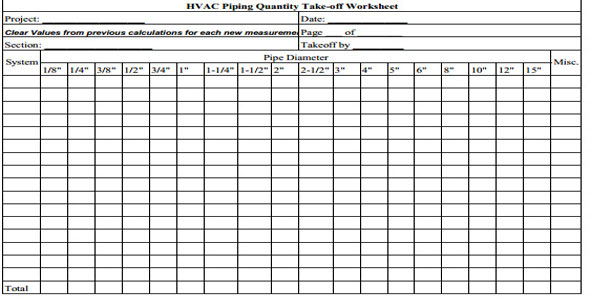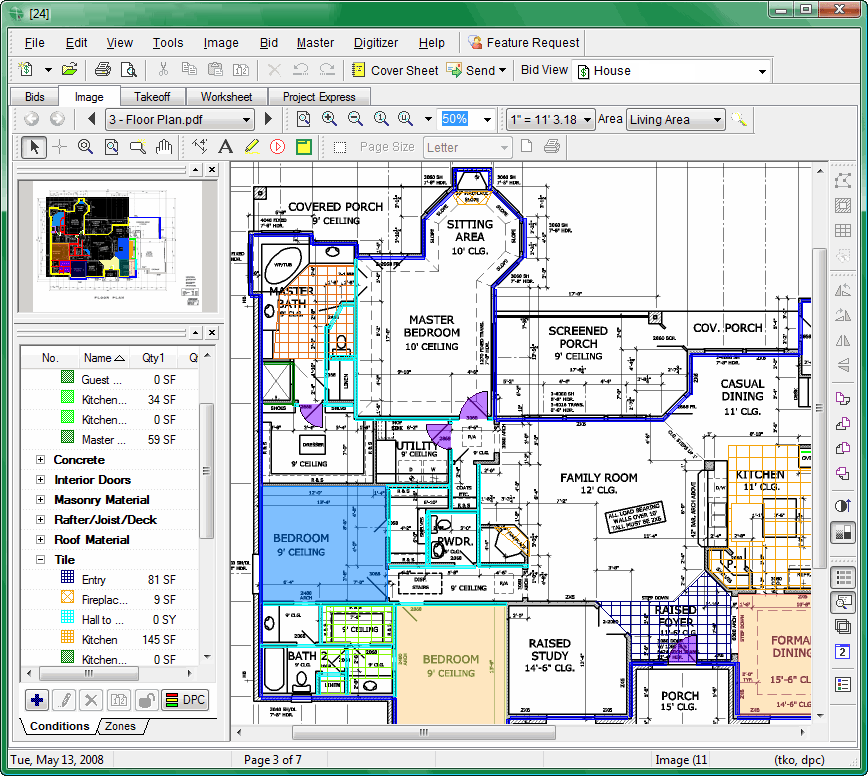

Quantity surveying practices now produce bills of quantities using various software packages, each of which has its own techniques for entering dimensions and composing descriptions. It may be perfectly acceptable to measure outline drawing to a lesser degree of accuracy to generate approximate quantities as part of a preliminary budget cost estimate. It would not be intended that an undimensioned 1:1000 block layout produced during the initial phase of the design process would be used to measure lengths of walls to the millimetre. The accuracy required usually increases in tandem with the detail of the design. Accuracy, again, is the objective, however the level of accuracy which is to be expected depends on the degree to which the design has been developed and the purpose for which the measurements have been taken. Quantification on the other hand is reasonably straightforward. Descriptions must therefore be accurate, clear, concise and unambiguous. Designers and quantity surveyors must be aware that others will rely on their descriptions when pricing building works. The description will only be adequate if the estimator is capable of fully pricing the original detail.

In practical terms this means that the description must be clear enough to enable an estimator or valuer to visualise the detail without having to refer to the drawing. The measurer must be able to describe concisely what the designer has drawn or the builder has built. Measurement has two basic essential activities description and quantification.ĭescription usually involves 'translating' information contained on drawings, specifications and technical reports and communicating that information accurately and concisely so that another person will completely understand the writer's intentions. It is assumed they are conscious of the responsibility and are worthy of it. They are spending employer's money every time a dimension is entered. Measurements must be carefully made regardless of whether the measurer is sitting comfortably at an office desk or is on site up a scaffold in the rain, other people's money depends on it and so does the measurer's reputation. This involves producing accurate quantities in a way which is comprehensive, technically accurate and clear in its approach and presentation. The purpose of measuring any building work is to establish the correct amount of work to be done. > A contractor will present measured variations as part of a final account settlement. > On smaller projects an estimator may need to measure the quantities from the tender drawings and specifications as pan of a tender submission. > A quantity surveyor may take off quantities from detail drawings to produce a bill of quantities for tendering purposes. > A quantity surveyor may calculate the approximate quantities of work during the design development stage to produce a cost plan to check the adequacy of the building budget. > A project manager may require the gross floor area of a proposed office block to establish a building budget at the initial stages of a contract. Measurement is used by various stakeholders and construction professionals throughout the development process to calculate the quantity of work to be done. Read more: Procedure of Contractual Claims in Construction Contract. By the end of the this articles, you will become familiar with taking off quantities and construction takeoff sheet. Also you can share our valuable article with other professionals. So be sure to bookmark this article to check out future posts to learn valuable information on the other sources as well. Tags take of sheet template excel, take off sheet Taking off quantities is major role of the quantity surveyor, In this article we will discuss about tds sheet quantity surveying, taking off sheet ( construction takeoff sheet) and taking off quantities in construction.


 0 kommentar(er)
0 kommentar(er)
